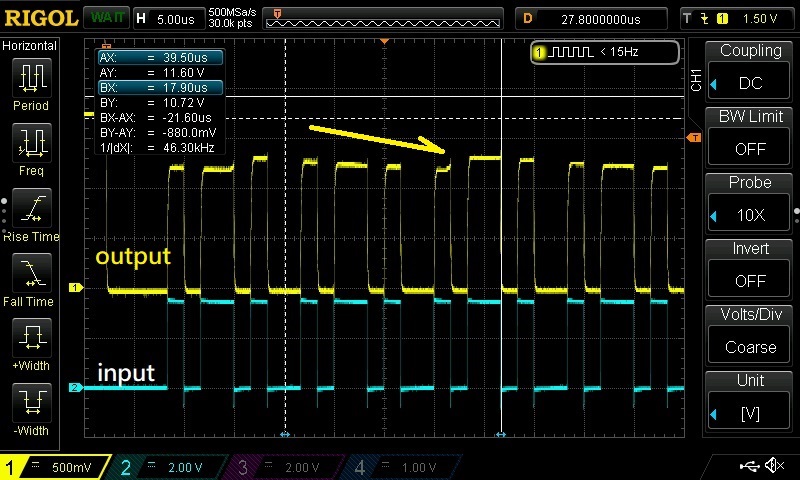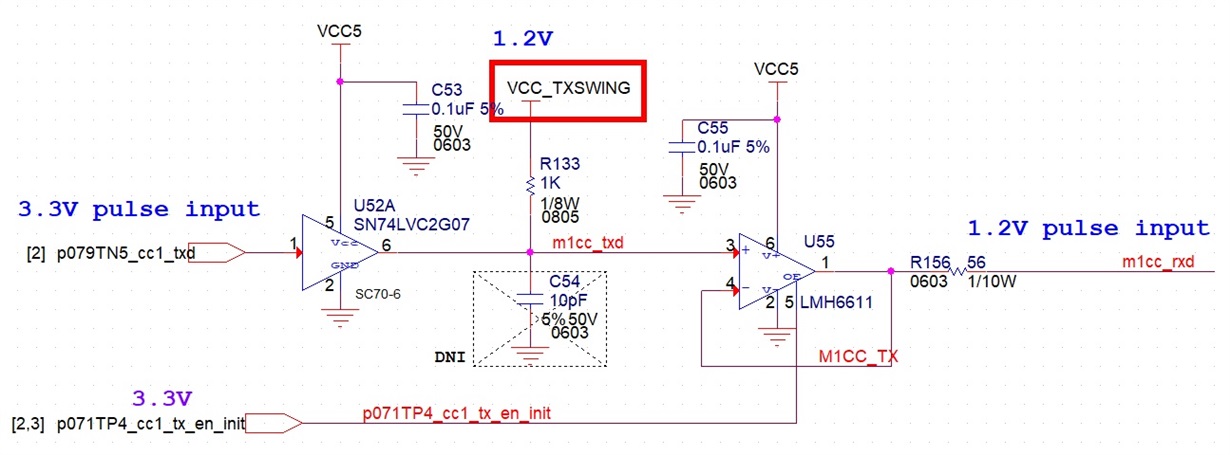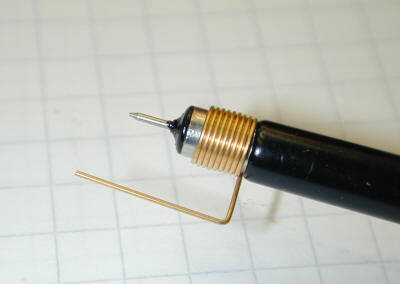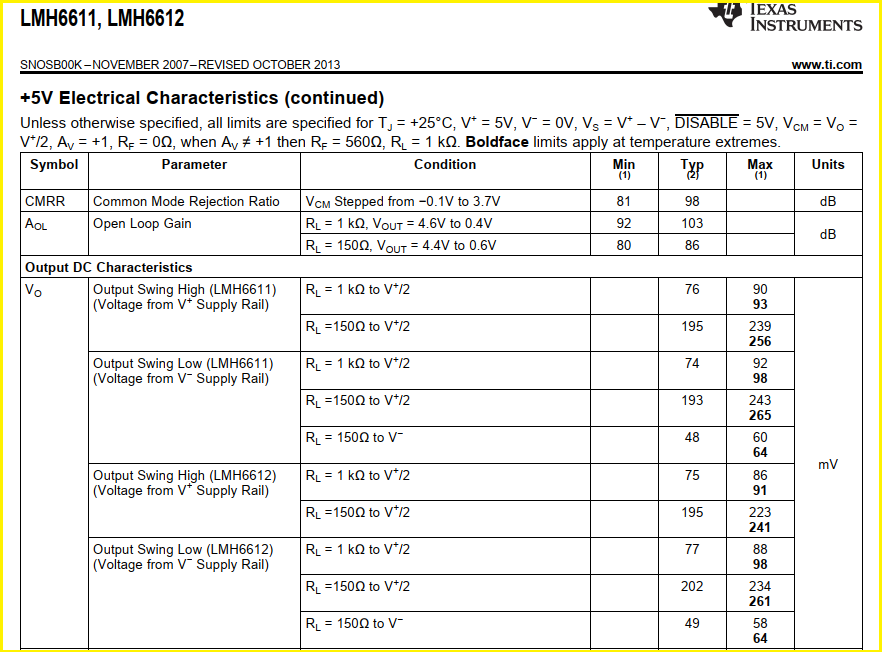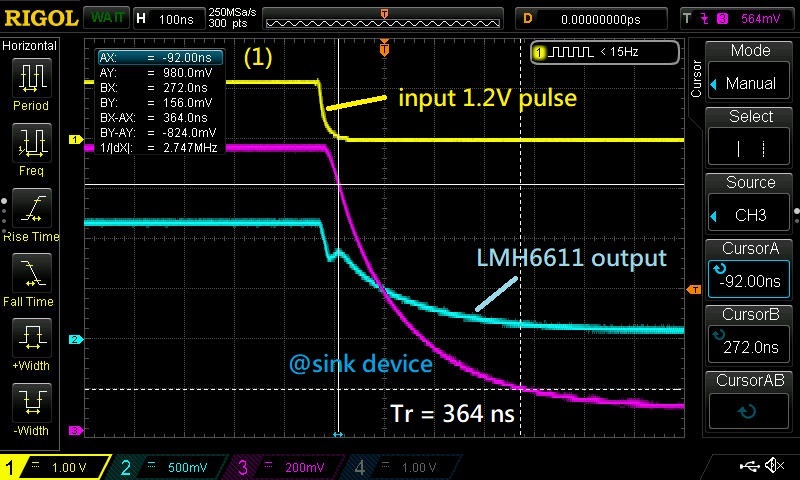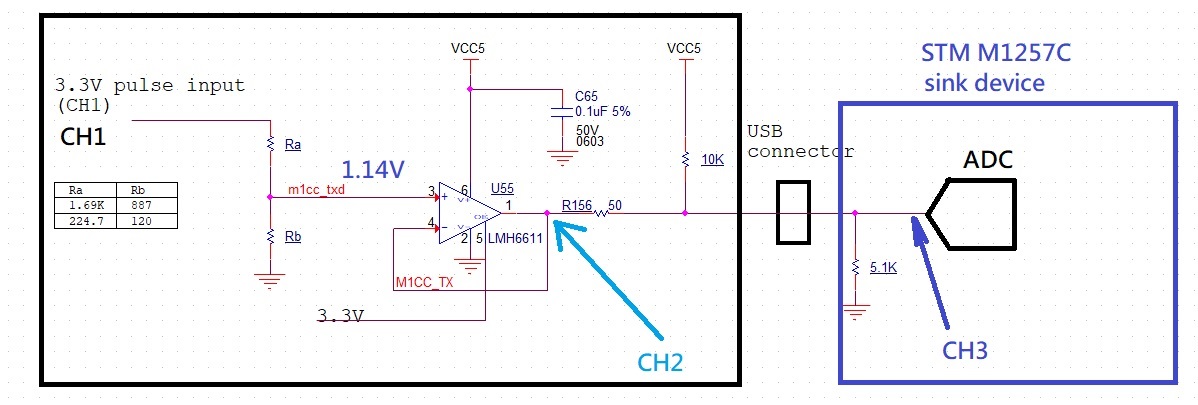Other Parts Discussed in Thread: SN74LVC2G07, , OPA830, LM7705
Hi, sir/madame:
We are driving the Op-amp LMH6611 by an open-drain buffer SN74LVC2G07 (waveform below). The 3.3V input to SN74LVC2G07 is shown in channel 2 and the 1.2V output from LMH6611 is shown in the channel 1. The swing of LMH6611 output (CH2) sometimes does not reach 1.2V.
(Question) Is 3.3K ohm a proper resistance on R133 in this application? Is there any other possible reason why the sawing does not reach 1.2V?
Thanks!



